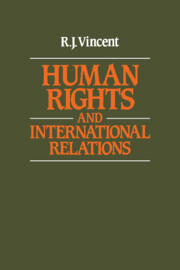8 - Human rights in foreign policy
Published online by Cambridge University Press: 11 November 2009
Summary
There is an inescapable tension between human rights and foreign policy. Their constituencies are different. The society of all humankind stands opposed to the club of states, and one of the primary rules of the latter has been to deny membership to the former. Foreign policy, according to these rules, should be conducted among states. It should not involve itself either with the communities enclosed by states, or with the notional global community which reformers, revolutionaries and other trouble-makers have called up to justify their enthusiasms. The society of states should and does concern itself with rights, but they are not the rights of individuals, or even of nations, but of states. And one of the points about the rights recognized by the society of states, as we saw in Chapter 8, was to allow political diversity, plural conceptions of the rights that were to apply to individuals and groups within states. The promotion of human rights, from the point of view of the morality of states, turns this doctrine inside out. It has tended to mean the attempt by one community, or group of communities, to make particular values general. This is a form of imperialism — the making of several societies one — even if it is restricted to the establishment of basic rights.
- Type
- Chapter
- Information
- Human Rights and International Relations , pp. 129 - 152Publisher: Cambridge University PressPrint publication year: 1987



